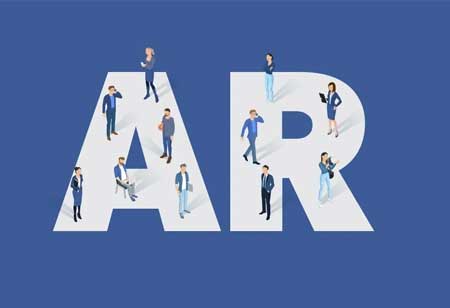THANK YOU FOR SUBSCRIBING
AR-Here is a Driver Friendly Technology!
Augmented reality works on the concept of superimposing graphics, sound, haptic feedback, and other sensory enhancements over the real world and in real-time

By
Apac CIOOutlook | Wednesday, March 18, 2020
Stay ahead of the industry with exclusive feature stories on the top companies, expert insights and the latest news delivered straight to your inbox. Subscribe today.
Augmented reality works on the concept of superimposing graphics, sound, haptic feedback, and other sensory enhancements over the real world and in real-time
Fremont, CA: Have you ever wondered about the technology behind 'try before you buy,' which is offered in the retail outlets? Perhaps, no. Augmented reality (AR) is the answer to it. Despite being there around us since long with the versatile feature, AR has not been widely adopted yet. Looking at the disruptive potential this technology possesses, technologists are constantly searching for ways to utilize it the maximum.
Augmented reality works on the concept of superimposing graphics, sound, haptic feedback, and other sensory enhancements over the real world and in real-time. Usually, the screened devices like smartphone and smart lenses, carry out the features of AR. AR uses computer vision, mapping, simultaneous localization, and dept tracking data to process and show digital content relevant to what the user is looking at. The functions and programs of AR are quite similar to machine learning and artificial intelligence.
Implementing the Technology on Roads
With roads becoming busier than ever, experts predict that by 2035, there will be 2 billion cars on the roads globally. This is sure to create more traffic, more obstructions, and hazards on the road. Keeping this in mind, modern-day drivers need to be more attentive while driving on these busy roads. Using augmented reality and a combination of sensors, drivers can have the necessary information presented on the windscreen. Manufacturers could use the technology to present drivers with speed, fuel, revs, and current radio station information. Some big players do even offer lane guidance. With these facilities on-screen, drivers can have their full attention on the roads rather than fiddling with buttons on the center console.
Things get more interesting when motion sensors, GPS, and camera combine with augmented reality. Cameras and motion sensors can detect traffic slowing, while GPS telemetry can warn the driver of congestion up ahead. With such information in the backdrop, drivers get plenty of time to slow down, halt, and plan an alternative route, wherever possible. Drivers also get the warning beeps if there are pedestrians walking behind a parked car. The same technology also warns the drivers if the car is too close to another, both while moving and parked. The camera feed provides blind spots that help in avoiding collisions and make maneuvering easier.
Augmented reality, in its basic forms, can also highlight road markings, crossings, and traffic lights. This feature is helpful on the roads where the marking has worn out, is obscured by adverse weather conditions, or during the night drives. With lane guidance technology, one can easily see how road users can benefit. Car seats laced with thread-based transistors could give information about those on board. It can also warn the drivers about the hydration levels and comfort levels, thus prompting them to wait for a rest.
The internal camera in the car can detect if the driver is tired, (or drunk) based on the amount of attention he is paying on the road and on the driving. At least 1 out of 6 cases of road accidents were caused due to fatigue. These technologies, combined with AR, can drastically bring down the cases and save a lot of lives. The autonomous cars will become safer with these technologies. Usually, autonomous cars lack the experience and are operated only on the basis of their programming. An augmented reality system can continuously update occupants with information related to hazards or erratic driving, thus allowing driver the right to intervene in case he feels something is wrong.
See Also :- Top AR/VR Solution Companies





